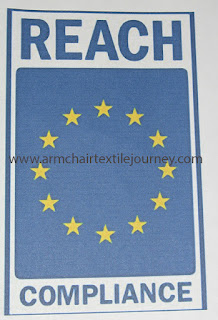One of the most widely accepted and strictly enforced is REACH. Regulating the use of chemicals in the process of manufacture, this certification from Europe has had far reaching ramification with manufacturers / importers & exporters to EU rushing to be REACH compliant.
REACH is the regulation by the European Community on chemicals and their safe use. It looks at the Registration, Evaluation, Authorisation and Restriction of Chemical substances. REACH is made up of the first letters of each of the above in the definition. It came into existence as a law in June 2007. The reason for its enforcement was the wide prevalence of using chemicals in the growing / manufacturing processes which had harmful side effects. A large amount of chemicals was being used, with little or no information on its effects or what it was. This was a process of gathering the information to provide greater safety, responsibility in its handling. Another problem was that the policy on the use of chemicals has been historically patchy. As new and newer chemicals entered the lexicon, regulations were put in place for it specifically. An overall picture of the chemicals was not there and there was a distinction between new chemicals and existing chemicals. REACH has aimed at creating a single system for all chemicals. It places the onus on the manufacturers to understand the use of chemicals and their effect on human lives. This results in the proper management of the chemicals and understanding of its properties and effect.
A very rigorous system is used for REACH. The manufacturer in say the apparel industry needs to understand the chemicals used in every stage. So chemicals used in the production of yarns, the dyeing process, washing, manufacturing of yarns etc have to documented and the apparel manufacturer understand it and its implications in the apparel. Most retailers though tend to push their suppliers at every stage to get REACH compliance, so the end result is certified. The major problem has been for those exporting to EU and are sourcing their products from elsewhere. In such a situation most do not have high quality information available on chemicals used in the manufacturing process. The process becomes all the more complicated when say fabric from India or buttons manufactured in India are to be used in a product which will ultimately reach EU. In a bid to further tighten the regulations, 31st May 2013 is the deadline for the registration of all substances manufactured or imported above 100 tonnes per year has to be registered. What REACH aims at doing is to provide transparency and information in the industry, it instills a process of innovation and of course competitiveness. At the same time textiles manufactured in the EU where it is easier for compliance definitely have an edge over the others.

Comments
Post a Comment